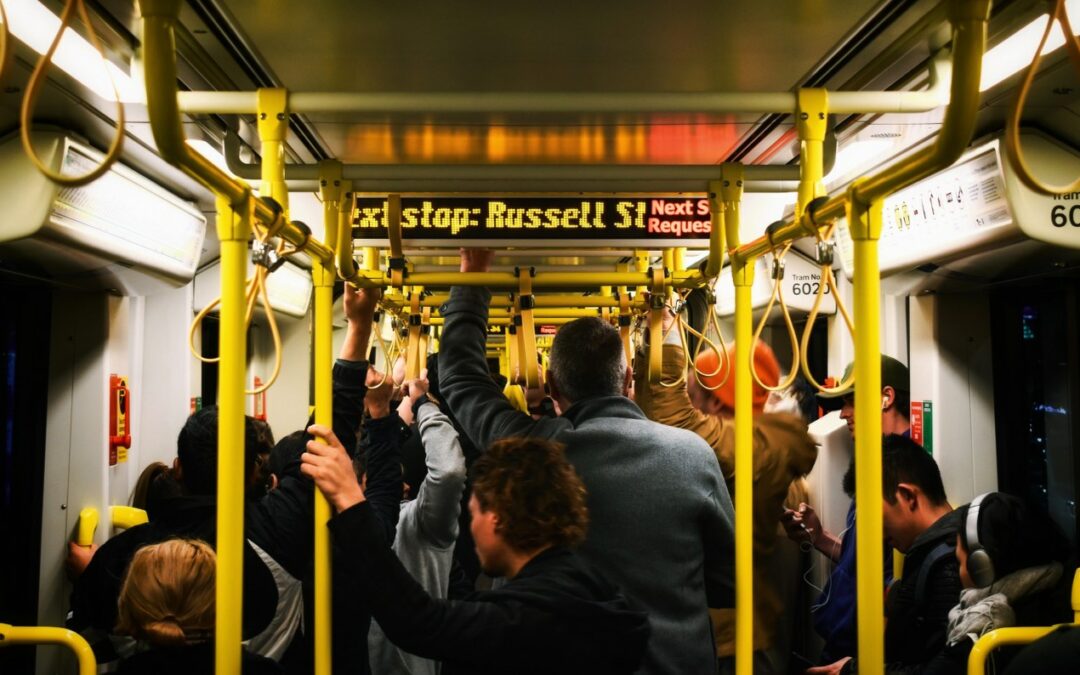Ensuring Safe Journeys: Common Infections in the Transport Industry and How to Protect Everyone Onboard!
Safety is paramount in the transport industry, and that includes ensuring the well-being of everyone on board. Today, we shed light on common infections that can occur in the transport environment and share essential tips on using antimicrobial coatings for public transport safety. So, fasten your seatbelts, and let’s embark on this informative journey together!
On public transport, including buses, trams, and trains, several common bacteria and viruses can be found.
Here are some of the most prevalent ones:
- Influenza Virus: The influenza virus, responsible for seasonal flu, can spread easily in crowded public transport settings. It can be transmitted through respiratory droplets when an infected person coughs or sneezes.
- Rhinovirus: Rhinoviruses are the leading cause of the common cold. They can survive on surfaces for hours, making them easily transmissible through contact with contaminated surfaces such as handrails, seats, and door handles.
- Norovirus: Norovirus is a highly contagious virus that causes gastroenteritis, leading to symptoms like vomiting, diarrhea, and stomach cramps. It can spread through contact with contaminated surfaces or by consuming contaminated food or water.
- Staphylococcus aureus: Staphylococcus aureus is a bacteria commonly found on surfaces, including public transport. While it usually resides harmlessly on the skin, it can cause infections if it enters the body through cuts or open wounds.
- Escherichia coli (E. coli): E. coli is a bacteria that can be found in the environment and can cause gastrointestinal infections. It can be transmitted through contact with faecal matter, which can be present on contaminated surfaces.
- Methicillin-Resistant Staphylococcus aureus (MRSA): MRSA is a strain of Staphylococcus aureus that has developed resistance to certain antibiotics. It can cause difficult-to-treat infections and is a concern in public settings due to its ability to spread through contact.
- Respiratory Syncytial Virus (RSV): RSV is a common virus that causes respiratory infections, particularly in young children and older adults. It spreads through respiratory droplets and can survive on surfaces for hours.
To minimize the transmission of these bacteria and viruses on public transport, it is essential to practice good hygiene habits. These include washing hands frequently with soap and water or using hand sanitizers, avoiding touching the face, covering the mouth and nose when coughing or sneezing, and maintaining cleanliness and disinfection of frequently touched surfaces.
These infections can persist on surfaces for hours or even weeks. Even the most rigorous cleaning strategies struggle to completely eradicate them, as surfaces become re-contaminated after cleaning.
Now, imagine a product that:
- Continually kills all viruses and bacteria, including multi-resistant strains.
- Is environmentally friendly and sustainable for our planet.
- Requires only once-a-year application.
Sound interesting? Let’s delve deeper into how our innovative product Dyphox, a leader in antimicrobial coating technology, can help in breaking the chain of infection in the transport industry.
This video highlights the unique features and benefits of our solution, providing a clear understanding of its effectiveness.
Dyphox’s antimicrobial surface coating technology can play a vital role in combating the above-mentioned bacteria and viruses on public transport. Dyphox is designed to eliminate a wide range of pathogens, including bacteria and viruses, providing a safer and healthier environment for passengers and staff.
By applying Dyphox to surfaces commonly touched on buses and trains, such as handrails, door opening buttons, and door handles, we can significantly reduce the risk of bacterial and viral transmission. Dyphox’s unique formulation harnesses the power of singlet oxygen to kill pathogens effectively, including multi-resistant bacteria, while remaining environmentally friendly and sustainable.
This long-lasting, protective antimicrobial coating enhances the effectiveness of infection prevention measures on public transport when incorporated into regular cleaning and maintenance routines.
To illustrate the impact of Dyphox, let’s consider hospital hygiene standards as an example. The diagram below illustrates the clear impact Dyphox can have. Without Dyphox, the germ load escalates above the hygiene threshold in the intervals between wipe-downs. However, with Dyphox in use, the germ load maintains a consistent low level, significantly enhancing the cleanliness and safety of the environment.

Just like hospitals, the transport industry can greatly benefit from this level of protection, ensuring a cleaner, safer environment for all passengers and staff.
We are committed to ensuring the safety and well-being of passengers and staff in the transport industry. If you would like to learn more about how Dyphox, one of the top antimicrobial coating products, can help fight these infections and create a healthier environment on public transport, please visit our website or reach out to us directly.
Together, let’s pave the way for cleaner and safer public transport experiences, protecting the health of everyone on board with our certified antimicrobial coating.
#TransportSafety #InfectionPrevention #PublicHealth #HealthySurfaces #Dyphox

